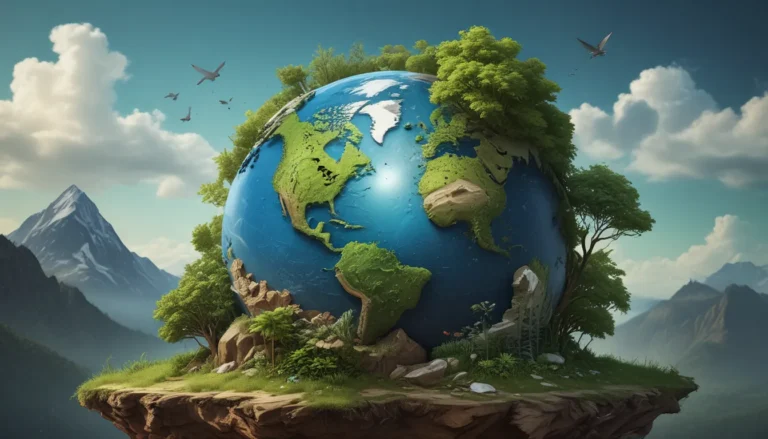The images in our articles may not match the content exactly. They are used to grab your attention, not to show the exact details in the text. The images complement the text but do not replace it.
Language is the cornerstone of society, the key to understanding, and a bridge that connects us all. In this comprehensive guide, we will explore an array of captivating language facts that range from the essential to the peculiar. With over 7,000 languages spoken worldwide, the world of linguistics is a vibrant tapestry of diversity and complexity. Join us as we unravel the mysteries and marvels of language in this enlightening journey.
Unveiling Language Infographics: A Visual Window into Linguistic Marvels
Russian: The Pioneer of Spacebound Conversations
Yuri Gagarin, the first man in space, marked a historical moment by speaking the first words in space in Russian. Additionally, Russia’s Soyuz spacecraft, the primary mode of travel to the International Space Station, underscores the importance of learning the Russian language for astronauts.
Basque: The Enigmatic Mystery Language
With a distinctive numbering system and a unique structure unrelated to any other language, Basque continues to baffle experts with its origins and evolution. Spoken in the Basque Country of Spain, this enigmatic language stands as a testament to the diversity of linguistic expressions.
Scrabble: A Global Reflection of Linguistic Diversity
International versions of the popular board game Scrabble showcase the linguistic nuances of different countries and regions. From the varying distributions of tiles to the commonality of certain letters, Scrabble offers a playful yet insightful glimpse into the richness of language.
English: A Vast Lexical Landscape
Boasting a staggering vocabulary of approximately 750,000 words, English stands as the language with the most extensive lexicon globally. While mastering English may seem daunting, the availability of online classes tailored for adult learners has made the language more accessible than ever before.
The Alchemist: A Story of Linguistic Triumph
Paulo Coelho’s novel “The Alchemist” holds the Guinness World Record for the most translated book by a living author. Despite its humble beginnings, the novel flourished through translations into 80 languages, captivating readers worldwide.
Tower of Babel: The Biblical Tale of Linguistic Diversity
The biblical narrative of the Tower of Babel offers an intriguing myth about the origins of diverse languages. According to the tale, humanity’s hubris led to the fragmentation of a unified language into diverse tongues, shaping the linguistic landscape we know today.
Ambigrams: Words with Multiple Perspectives
Ambigrams are words that retain their meaning when viewed from different angles, exemplifying the creative interplay between form and content in language.
Global English: A Language of Unity
With approximately 1.5 billion speakers worldwide, English transcends borders and cultures, making it the most widely spoken second language globally. The global prevalence of English reflects its status as a lingua franca in various fields.
Language Evolution: A Constant Creation of Words
Every 98 minutes, a new word enters the English lexicon, illustrating the dynamic nature of language evolution. From Shakespeare’s inventive wordplay to the continuous influx of new terms, language thrives on innovation and adaptation.
Cognitive Benefits of Bilingualism
Research indicates that learning a second language can delay the onset of dementia and enhance cognitive functions, underscoring the cognitive advantages of bilingualism.
Fictional Languages: Crafting Linguistic Worlds
Authors often invent fictional languages to enrich their storytelling and world-building. From J.R.R. Tolkien’s Elvish to George R.R. Martin’s Dothraki, fictional languages add depth and authenticity to fictional realms.
Quirky Language Trivia: Unveiling the Intriguing World of Linguistic Oddities
Vowelless Wonder: The Tashlhiyt Berber Dialect
In the Tashlhiyt Berber dialect, words like ‘Tzgr’ (she crossed) and ‘tftktstt’ (you sprained it) defy conventional vowel usage, showcasing the linguistic diversity of human speech.
Colorless Languages: A World of Black and White
Some languages, such as Dan in New Guinea, lack distinct color terms and categorize objects based on dark or light attributes, offering a unique perspective on linguistic categorization.
Semordnilaps: Linguistic Reversals
Semordnilaps, or words that create new words when spelled backward, such as ‘stop’ from ‘pots,’ highlight the playful intricacies of language.
Silbo Gomero: Whistling Language of La Gomera
The Silbo Gomero language in La Gomera, Spain, relies entirely on whistles for communication, showcasing the diverse forms of linguistic expression found across the globe.
Khoisan Click Languages: The Art of Clicks
Click languages, such as those spoken in Botswana, utilize distinctive clicking sounds as part of their phonetic repertoire, adding a unique auditory dimension to human speech.
Language Preservation: Safeguarding Linguistic Heritage
Extinct Languages: A Vanishing Tapestry
As linguists predict the extinction of 50% to 90% of the world’s languages by the end of the century, efforts to document and preserve endangered languages become crucial in safeguarding linguistic diversity.
Linguistic Diversity in Asia
Asia, home to 2,300 languages spoken by 4.46 billion people, stands as a testament to the rich tapestry of linguistic diversity on the continent.
French Influence: A Legacy of Language
The Norman Invasion of 1066 and William the Conqueror’s rule established French as the official language of the U.K. for 600 years, shaping the linguistic landscape of the region.
Mandarin Mastery: A Linguistic Challenge
Regarded as one of the most complex languages to learn due to its tonal nature and vast character system, Mandarin remains a formidable linguistic challenge for learners worldwide.
Lingua Francae: Bridging Cultural Divides
Lingua francae serve as bridge languages that facilitate communication between individuals of diverse linguistic backgrounds, promoting understanding and collaboration on a global scale.
Cantonese Commerce: A Language of Business
Cantonese, spoken by 60 million people in Southeast Asia, emerges as a prominent language for business and trade in the region, reflecting its economic significance.
Embrace the World of Language: A Gateway to Cultural Understanding
As we delve into the intricate web of language facts and curiosities, we gain a deeper appreciation for the diverse forms of human expression that shape our interactions and perceptions of the world. Whether through fictional languages, linguistic oddities, or historical influences, language remains a powerful force that unites and enriches our lives. Join us on this journey of exploration and discovery as we unravel the wonders of language and celebrate the vibrant tapestry of human communication.






